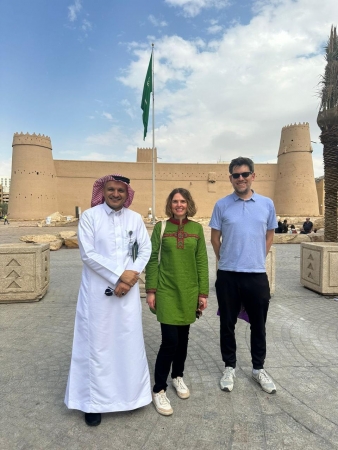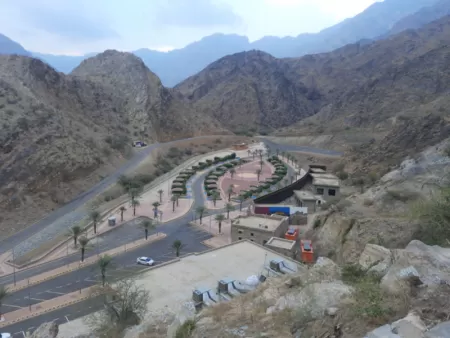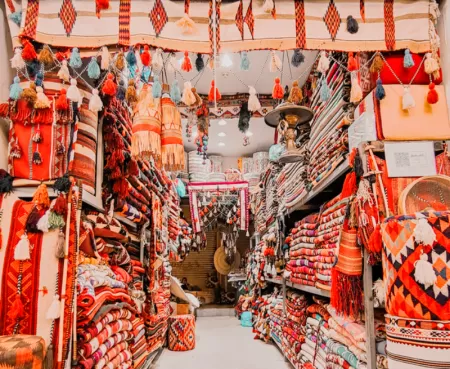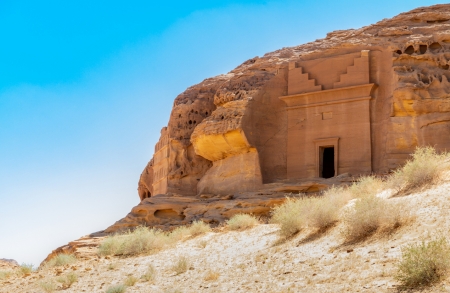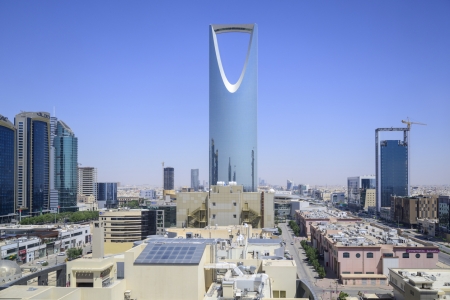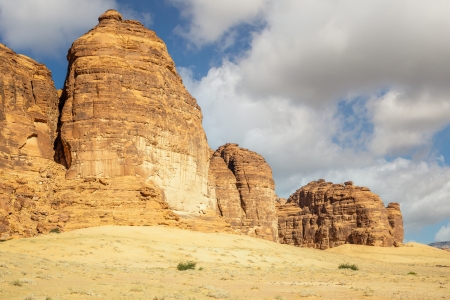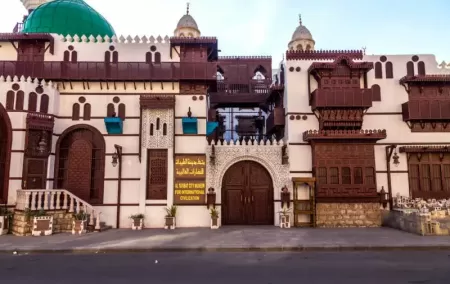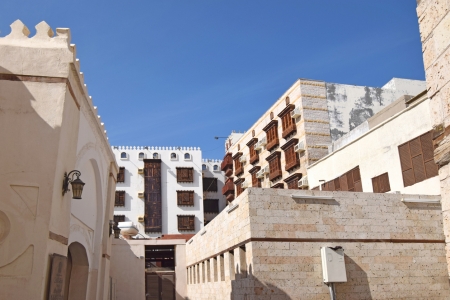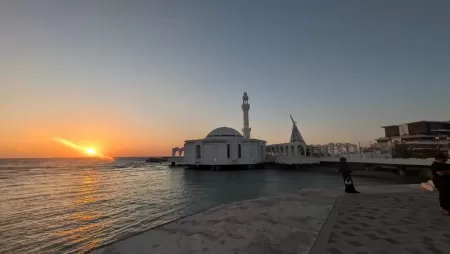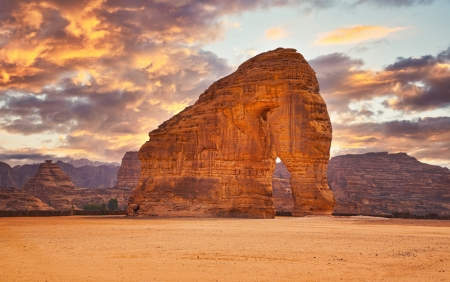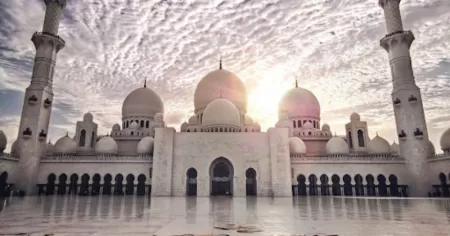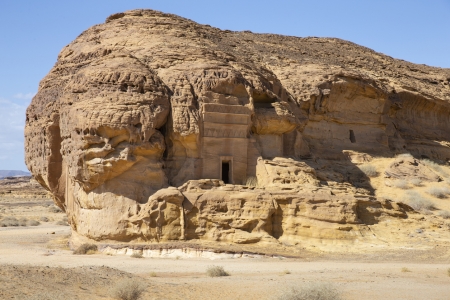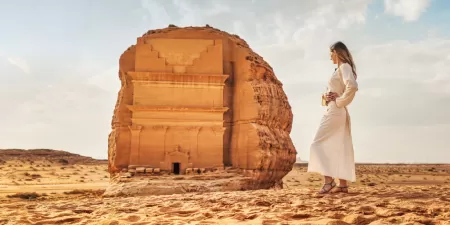The House of Islamic Arts
Immerse yourself in the beauty of Islamic arts—from elegant wall art to global exhibitions like the Islamic Biennale in Jeddah. Discover rich traditions, calligraphy, and geometric designs that reflect centuries of spiritual and artistic expression.

The Origins and Evolution of Islamic Art:
Islamic art emerged in the 7th century and evolved across various dynasties, including the Umayyads, Abbasids, Ottomans, and Mughals. Each era participates in distinct artistic elements, shaping a diverse yet harmonious visual language. From majestic mosques and palaces to delicate ceramics and textiles, Islamic art spans a large spectrum of mediums.
The Vision Behind the Museum:
The beginning of the House of Islamic Arts was driven by the desire to promote and preserve the intricate beauty of Islamic art. Founded by Saudi businessman Saleh Bin Hamza Serafi, the museum aims to educate the public about the historical value and cultural connection of Islamic artistry. This initiative aligns with Saudi Arabia's broader Vision 2030, which seeks to enhance cultural exchange and provide a greater understanding of the Kingdom's heritage.
Architectural Marvel:
The museum's architecture itself is a blend of modern design and traditional Islamic motifs, creating a welcoming environment for visitors. The structure is thoughtfully designed to complement the artworks it houses, with spacious galleries that allow for an immersive experience. Each hall is meticulously curated, showing the evolution of Islamic art from its inception to contemporary vision.
The House of Islamic Arts itself is an architectural masterpiece, blending traditional Islamic elements with contemporary design. The structure’s intricate mashrabiya screens, grand archways, and luminous domes transport visitors to a last era while incorporating modern aesthetics.
A Cultural Hub:
Beyond being a museum, the House of Islamic Arts serves as a cultural hub for events, workshops, and shows. It aims to engage the community and provide dialogues about art, history, and culture. This commitment to cultural exchange makes it a vital part of Jeddah's artistic landscape. Islamic art is not merely an aesthetic expression; it is deeply related to the religion, culture, and history of the Islamic world. It embodies the principles of beauty, symmetry, and spirituality, often reflecting intricate geometric patterns, arabesques, and exquisite calligraphy. Unlike Western art, Islamic art prioritizes abstract and decorative elements, avoiding figurative representations to uphold religious values.

The Origins and Evolution of Islamic Art:
Islamic art emerged in the 7th century and evolved across various dynasties, including the Umayyads, Abbasids, Ottomans, and Mughals. Each era participates in distinct artistic elements, shaping a diverse yet harmonious visual language. From majestic mosques and palaces to delicate ceramics and textiles, Islamic art spans a large spectrum of mediums.
The Vision Behind the Museum:
The beginning of the House of Islamic Arts was driven by the desire to promote and preserve the intricate beauty of Islamic art. Founded by Saudi businessman Saleh Bin Hamza Serafi, the museum aims to educate the public about the historical value and cultural connection of Islamic artistry. This initiative aligns with Saudi Arabia's broader Vision 2030, which seeks to enhance cultural exchange and provide a greater understanding of the Kingdom's heritage.
Architectural Marvel:
The museum's architecture itself is a blend of modern design and traditional Islamic motifs, creating a welcoming environment for visitors. The structure is thoughtfully designed to complement the artworks it houses, with spacious galleries that allow for an immersive experience. Each hall is meticulously curated, showing the evolution of Islamic art from its inception to contemporary vision.
The House of Islamic Arts itself is an architectural masterpiece, blending traditional Islamic elements with contemporary design. The structure’s intricate mashrabiya screens, grand archways, and luminous domes transport visitors to a last era while incorporating modern aesthetics.
A Cultural Hub:
Beyond being a museum, the House of Islamic Arts serves as a cultural hub for events, workshops, and shows. It aims to engage the community and provide dialogues about art, history, and culture. This commitment to cultural exchange makes it a vital part of Jeddah's artistic landscape. Islamic art is not merely an aesthetic expression; it is deeply related to the religion, culture, and history of the Islamic world. It embodies the principles of beauty, symmetry, and spirituality, often reflecting intricate geometric patterns, arabesques, and exquisite calligraphy. Unlike Western art, Islamic art prioritizes abstract and decorative elements, avoiding figurative representations to uphold religious values.
Collections of the House of Islamic Arts:
The heart of the museum lies in its amazing collections, which feature over a thousand artifacts spanning 15 centuries of Islamic art. These pieces are not just decorative; they hold deep historical and cultural significance, offering insights into the lives and beliefs of those who created them.
Ceramics and Glass:
One of the museum's standout collections includes fabulous ceramics and glasswork Showing exquisite designs from Andalusia to Persia.
These artifacts show the technical skillfulness and artistic taste of Islamic artisans. The intricate designs and vibrant colors reflect the cultural exchanges that occurred along trade routes, affecting styles and techniques.
Metalwork and Textiles:
The museum also houses an extensive collection of metalwork and textiles, Weaving stories of Islamic culture through patterns and embroidery.
illustrating the various applications of these materials in Islamic art. From ornate metal objects to beautifully woven fabrics, these pieces reveal the sophistication of craftsmanship and the importance of these mediums in everyday life.
Calligraphy and Manuscripts:
A significant highlight of the museum is its collection of calligraphy and manuscripts, which are integral to Islamic culture. The accurate artistry of calligraphy, often seen in religious texts, represents a unique form of artistic expression. The manuscripts, Featuring Qur'anic calligraphy and historical texts. some dating back to the early centuries of Islam, provide a hint into the literary and intellectual achievements of the Islamic world.

Kufic & Naskh Scripts :
Visitors can compare early Kufic scripts with the flowing elegance of Naskh, seeing firsthand how calligraphy evolved across dynasties.
Brass & Silver Inlay Work:
Intricate metalwork, often featuring arabesque designs, showcases the technical skill of Islamic artisans.
Visitor Experience:
The House of Islamic Arts is designed to offer an enriching experience for all visitors. The museum is open daily, welcoming guests from 10 a.m. to 11 p.m., with extended hours on Fridays. This accessibility allows individuals and families to discover the treasures of Islamic art at their convenience.
Guided Tours:
To enhance the visitor experience, the museum offers guided tours that go deeper into the significance of the collections. Knowledgeable guides provide insights into the historical context of the artifacts, making the visit both educational and engaging. These tours are particularly beneficial for those seeking to understand the small difference between Islamic art and its evolution over time.
Interactive Exhibits:
In addition to traditional displays, the museum features interactive shows that encourage visitor participation. These hands-on experiences allow guests to engage with the art in innovative ways, enhancing a deeper appreciation for the skills and techniques employed by artists throughout history.
Cultural Significance:
The House of Islamic Arts plays a vital role in preserving and promoting the cultural heritage of the Islamic world. By showing the artistic achievements of various civilizations, the museum provides a bridge between cultures, fostering understanding and appreciation.
A Testament to Diversity:
The museum's collections reflect the differences in Islamic art across different regions, from the Far East to North Africa and beyond. This variety highlights the interconnectedness of cultures and the shared heritage that exceeds geographical boundaries.
Educational Initiatives:
In its commitment to education, the House of Islamic Arts hosts workshops and lectures that engage the community. These initiatives aim to inspire a new generation of artists and scholars, ensuring that the legacy of Islamic art continues to thrive.
Planning Your Visit:
For those interested in exploring the House of Islamic Arts, planning ahead can enhance the experience. The museum is located in the heart of Jeddah, making it easily accessible for both locals and tourists. For a seamless experience, plan your visit during the cooler months between October and April. This period aligns with many Saudi Arabia Trips, making it a perfect time to discover the museum along with other cultural landmarks.
Admission and Passes:
Visitors can purchase passes that grant access to multiple attractions, including the museum. This approach not only saves money but also encourages the discovery of the rich cultural offerings in the area. Children under 12 can enter for free when accompanied by an adult, making it a family-friendly destination. The museum operates throughout the week, except for Fridays, with varying hours. Ticket prices are affordable, with discounts available for students and groups. For an in-depth experience, consider booking a guided tour in advance.
Amenities and Facilities:
The museum is equipped with amenities to ensure a comfortable visit. Visitors can enjoy complimentary refreshments, including Arabic coffee and dates, which enhance the cultural experience. Additionally, facilities such as restrooms and seating areas are available throughout the museum.
The House of Islamic Arts is more than just a museum; it is a celebration of the rich heritage and artistic expression of the Islamic world. With its extensive collections, engaging exhibits, and commitment to cultural exchange, it is a beacon of knowledge and inspiration. Whether you are a history enthusiast, an art lover, or simply curious about Islamic culture, a visit to this remarkable institution promises to be a rewarding experience.
As you embark on your journey through the House of Islamic Arts, you will not only witness the beauty of Islamic art but also gain a deeper understanding of the cultural narratives that shape our world today. This museum is a must-visit destination for anyone embarking on Saudi Arabia tours, offering a unique glimpse into the artistic legacy that continues to inspire and captivate.
FAQs:
1-What makes the House of Islamic Arts unique?
The House of Islamic Arts stands out for its huge collection of Islamic artifacts, interactive exhibits, and educational programs, offering a rich cultural experience unlike any other.
2-Can I take photos inside the museum?
Photography policies vary depending on the exhibit. It’s best to check with museum staff before capturing images.
3- Is the House of Islamic Arts suitable for children?
Yes! The museum offers engaging workshops and activities that make Islamic art accessible and enjoyable for younger visitors.
4-How long does a typical visit take?
A comprehensive visit takes about 2-3 hours, but art enthusiasts may wish to spend longer exploring the exhibits.
5- Do I need to book tickets in advance?
While walk-ins are welcome, booking in advance is recommended, especially during peak seasons.
6-What’s the best way to book tickets?
Tickets can be purchased online or at the entrance, but booking in advance is recommended during peak seasons.
7-Is The House of Islamic Arts included in standard Saudi Arabia tours?
Yes, many tours to Saudi Arabia feature this museum as part of cultural itineraries.
Don’t miss this wonder on your Saudi Arabia Tours - Book your Journey Now!
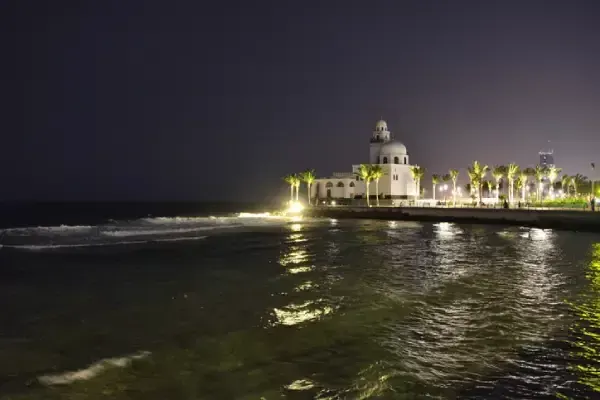
Customize Your Dream Vacation!
Get in touch with our local experts for an unforgettable journey.
Plan Your Trip

